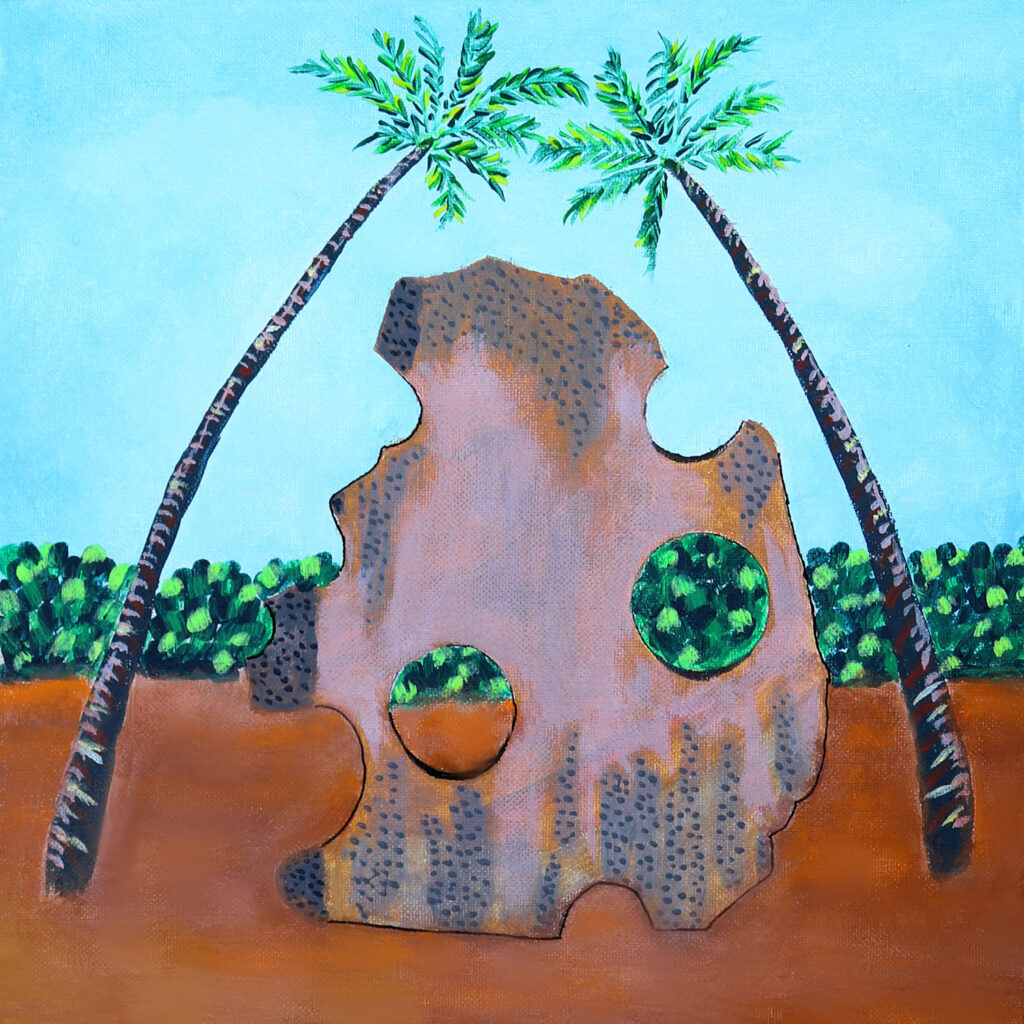
I live in a condo where the grounds have a handful of these crazy sculptures. I knew they were made of Coquina, but I had no idea how they ended up here and how the perfectly formed holes and lines came into play. When they excavated to build these condos in 1990, they saved these and placed them around the property as sculptures. This painting represents the largest in my neighborhood, standing about seven feet tall. It weighs over 13,000 pounds.
These rocks have a place in Florida history. The old Florida Sugar Mills and Castillo de San Marcos, in St. Augustine are made from the solid material.
The coquina stones are between 12 thousand and 2 million years old. When they were forming, sea levels were lower, the shells and sand were exposed to rain. The acidic rainwater dissolved some of the calcium carbonate in the shells which ‘glued’ the shells and sand together. The rocks can be found along Florida’s East Coast from St Augustine to Palm Beach County.
The perfect cylindrical holes I thought were caused by the excavation. I was wrong. The holes were likely formed by rainwater eroding the rock which collected in a depression on the rock’s surface. Over time, the acidic rain dissolved some of the rock away creating a larger and larger circle with every rainfall.
Coquina is soft and easy to cut when underground, but hardens when exposed to air.
I bet you will never look at the coquina rocks in the same way